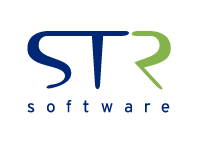Our partners at OMCS International have been “installing a culture of reliability over repair” for almost twenty years. Their method, PMO2000® is a planned maintenance optimization strategy that combines input from the maintenance technicians with real-time asset data to develop maintenance strategies that free up 20-40% of current maintenance labor and does so up to six times faster than traditional RCM methods. Here, OMCS introduces us to the concept of Planned Maintenance Optimization[1] (PMO):
Introduction: Planned Maintenance Optimization
Planned Maintenance Optimization is about reviewing current maintenance strategies, adding tasks that are missing, and removing work that is unnecessary. It takes into account work that is documented and the work that technicians perform that may not be recognized formally.
PMO Successfully Breaks the Cycle of Reactive Maintenance:

The Vicious Cycle of Reactive Maintenance™
Typically, when we are forced to do more with less, breakdowns come first. As a result, preventive maintenance suffers and leads to more breakdowns. Additionally, the “fix-it-quickly” mentality promotes “band aid maintenance,” or temporary repairs that frequently cost more in parts and labor.
Often in an effort to control costs, personnel numbers are reduced. As a result morale declines, apathy creeps in and a “quit and stay” mentality is adopted by the once proud craftsmen. With this, work standards drop. The vicious cycle feeds on itself and gradually organizations become almost entirely reactive.
The dilemma that many of us face is that we are leaders in organizations which often lack sufficient resources to keep the plant running, let alone find ways of improving reliability.
PMO2000® provides the tools and data to develop a system that quickly frees up 20-40% of your existing maintenance labor to work on improving your reliability.
We believe, and have proven, that building the correct, objective maintenance strategies for the tasks that craftsmen perform is the key to successfully breaking the circle of reactive maintenance.
What are the benefits?
- Greater ROI for the stakeholders of the assets
- Eliminating waste leaning towards a more effective, efficient, and leaner organization
- A more satisfied workforce through job growth and enhancement of skill sets
- Provides a proven system using applied engineering techniques taking risk to a minimal state
PMO: Less Analysis, Better Results than Traditional RCM
Like RCM, the aim of PMO is to show the failure characteristics of physical assets and create a maintenance and reliability program to meet those needs. However, what sets PMO2000® apart from standard Reliability Centered Maintenance (RCM) is that PMO analysis assesses known failures and starts with the status of the tasks being performed today. Contrarily, RCM seeks to analyze every failure mode on every piece of equipment within the system being analyzed. Both processes result in updated data, but by starting with the tasks and focusing on how the machine performs today, PMO gets teams to an actionable plan significantly faster.
When is PMO an ideal approach?
- Scenario 1: There are symptoms such as excessive scheduled or unscheduled production downtime, excessive inventory, and the inefficient use of the organization’s personnel
- Scenario 2: An objective evaluation of the PM workload has never been performed
- Scenario 3: There is uncertainty about what an effective maintenance process looks like and what results can be expected
PMO should be the first initiative in the Maintenance Continuous Improvement journey for its ability to free up valuable resources and break the reactive cycle of maintenance.
Contact STR Software to learn how to free up maintenance planners and make more time for reliability tasks by automating work order printing with attachments from Oracle eAM or JDE E1 CAM.




![Rollup of Product Updates [Winter 2025; v25.1]](https://www.strsoftware.com/wp-content/uploads/2023/02/Feature_Image_ProductUpdate_Wave-510x382.png)
